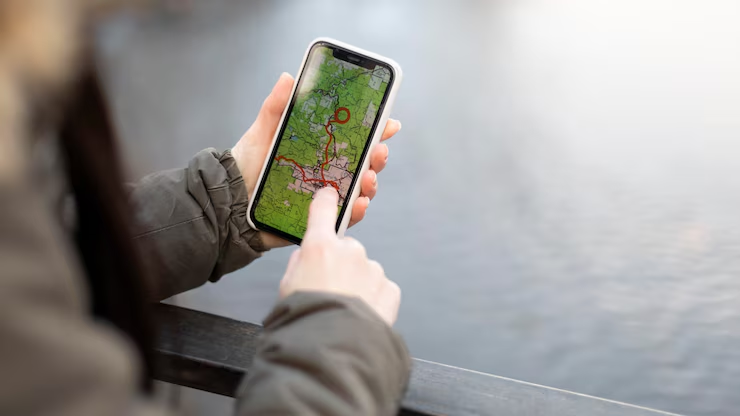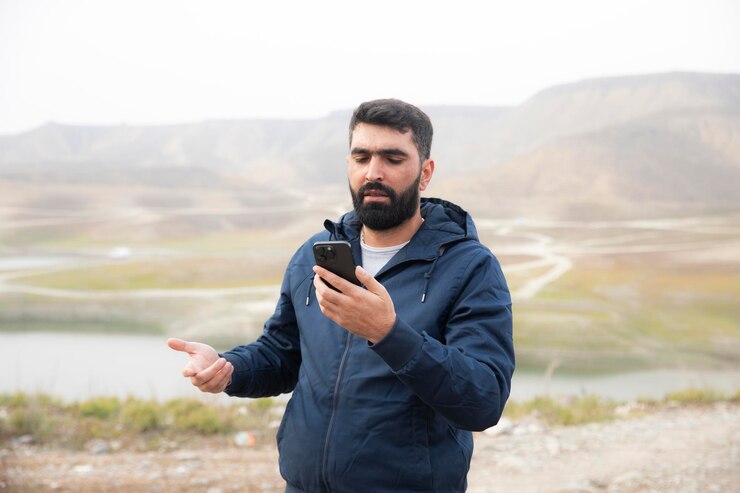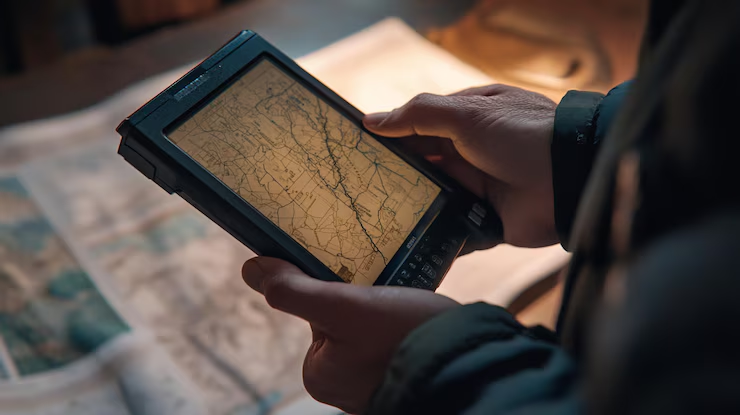The Travel Blog

The Importance of Offline Maps in Travel Planning
A quiet mountain road in northern Vietnam. A maze of medinas in Morocco. A lost signal somewhere in the Scottish Highlands. These aren’t problems—they’re stories waiting to happen. But only if there’s a way to get un-lost when the signal disappears. And that’s where offline maps quietly become the real MVP of any trip.
There’s a lot to be said about offline maps importance—not in the techy, buzzword-filled way, but in the honest, boots-on-the-ground reality of travel. Because sometimes, the difference between panic and peace of mind is a tiny blue dot that still moves even when the Wi-Fi doesn’t.
In an age when phones do everything, it’s easy to assume internet will always be available. Spoiler alert: it won’t. And no one wants to find that out while trying to get to a remote guesthouse or looking for the nearest train station before sunset.
Here’s a deep dive into why offline maps should be a non-negotiable part of modern travel—and how to make them work like magic.
Why Offline Maps Are More Than Just Backup
Some tools are safety nets. Others are daily essentials in disguise. Offline maps are both.
Their value isn’t just in emergencies. It’s in:
- Planning smarter before departure
- Navigating confidently in low-connectivity zones
- Preserving battery and data
- Avoiding roaming charges
- Discovering hidden spots beyond the reach of mainstream travel apps
Offline maps are not just backups to real-time tools. They’re a completely different tier of travel planning tools—one that works even when nothing else does.
Think of them as the travel equivalent of a flashlight: not always needed, but when they are, they’re irreplaceable.
Navigation Without Internet: Why the Signal Isn’t Always There

It’s easy to believe that global connectivity is near-perfect now. But even in 2025, the truth is more complicated.
Signals disappear in:
- Underground metro systems
- Mountainous or forested terrain
- Remote villages and islands
- Crowded festivals or national parks where towers are overloaded
- Border crossings or when switching between SIMs
And sometimes, the signal exists—but the data plan doesn’t. That international roaming fee? Not so romantic.
Navigation without internet isn’t a theoretical challenge. It’s an everyday reality for travellers across the globe. Offline maps don’t care about signal strength. They just work.
Planning Before You Go: How Offline Maps Shape Smarter Travel
Offline maps aren’t just for navigation. They’re brilliant for planning too.
Here’s how they help long before the flight takes off:
- Download entire regions in advance, so there’s no scramble at the airport Wi-Fi
- Drop pins for must-see spots—restaurants, hostels, viewpoints, local tips
- Save alternative routes in case public transport or weather changes plans
- Explore neighbourhoods virtually, giving a feel for safety, walkability, and distance
Think of it as creating a digital sketch of the trip. That way, when you arrive jet-lagged or late, you already know the lay of the land—even if the land’s off the grid.
Which Travel Planning Tools Include Offline Maps?
Not all apps offer robust offline functionality. But a few stand tall in the crowd.
MAPS.ME, Organic Maps, and OsmAnd are among the best. They allow downloading entire countries, offer walking and biking routes, and show everything from hiking trails to cafes—even when no data is available.
For drivers, Sygic and HERE WeGo offer top-notch offline driving tools with turn-by-turn navigation and points of interest.
Google Maps, surprisingly, still has limitations. Offline functionality is limited to driving directions and basic browsing—not walking or transit.
Curious about how these apps stack up? Dive deeper into the Top Offline Map Apps for Travelers in Remote Areas to match the tool to the trip.
Offline Maps and Battery Life: The Unsung Hero
Here’s something not often discussed: offline maps can significantly extend phone battery life.
No data = less energy burned on app refreshes, location tracking, or loading maps dynamically.
In airplane mode with GPS turned on:
- Your map still shows your location
- Navigation still works
- No push notifications drain your screen
- Your phone becomes an efficient, focused travel companion
For long hikes, remote drives, or travel days with no charger in sight, this efficiency becomes priceless.
How Offline Maps Enable Real Exploration

When internet is gone, creativity shows up.
Offline maps encourage:
- Wandering confidently in alleys or rural roads
- Trying alternative routes without fearing you’ll get lost
- Saying yes to detours, because the map’s still guiding
- Saving time and mental energy spent on finding Wi-Fi
There’s a quiet sense of control that comes from knowing the map will still be there—even when the road gets weird.
And isn’t that half the point of travel? To wander without getting lost. To explore without fear. Offline maps let that happen.
What to Save in Advance: Prepping Your Map Like a Pro
To make offline maps useful, they need a little love before the trip.
Here’s what should be saved:
- Accommodation (address and location pin)
- Transportation hubs (airports, train stations, ferry terminals)
- Emergency services (hospitals, police stations, embassies)
- Restaurants, cafés, and local markets
- Hiking trails, beaches, temples, or scenic stops
- Alternative lodging, in case bookings fall through
Use tags, folders, or starred lists. Whatever system feels right—just make sure it’s set up before going offline.
Offline Maps for Every Type of Traveller
Different adventures call for different tools. Here’s how offline maps adapt:
- Solo backpackers: Peace of mind in unfamiliar cities, mountain villages, or when detours happen
- Digital nomads: Seamless commuting without draining data or being stuck on café Wi-Fi
- Road trippers: Turn-by-turn directions through countryside routes and less-populated areas
- Hikers & campers: Topographic maps, trail routes, elevation info—all working offline
- Budget travellers: Avoid data costs and overpriced roaming while still navigating smoothly
Whatever the journey, the value of offline maps is universal.
Pro Tips for Better Offline Navigation
Want to level up your offline map usage?
Try these:
- Practice in airplane mode before the trip to see how your app behaves
- Preload areas you might not visit—but could
- Zoom in on your map while still online, caching additional detail
- Keep location sharing on with your travel group, even offline, using apps like OsmAnd+
- Carry a small power bank to extend map access during long days
Offline doesn’t mean disconnected—it means being prepared to move smarter, with fewer variables to stress over.
When Offline Maps Saved the Day
Some stories don’t sound dramatic until the details hit.
- A couple hiking in Patagonia got turned around during a snow flurry. Their offline map helped retrace steps—safely back to the start.
- A solo traveller in Laos missed the last bus. With no internet and no street signs, the saved offline map led to a nearby guesthouse not listed online.
- A road-tripper in rural Turkey lost signal for four hours. The map, downloaded earlier, stayed sharp and accurate—even across winding hill roads.
The common thread? Navigation without internet wasn’t a limitation. It was a lifeline.
Travel Freely, Navigate Wisely
There’s no app that guarantees a perfect trip. But offline maps come close. They strip out the panic and replace it with quiet confidence. They don’t beep, buzz, or beg for attention. They just show the way.
The offline maps importance conversation isn’t just for tech-savvy travellers or wilderness wanderers. It’s for anyone who’s ever tried to load a route in a subway, find their hostel in the rain, or reroute a hike halfway through.
Offline maps are not backup plans. They’re better plans. Thoughtful plans. Ones that respect curiosity and support exploration—on your terms, in your time, with or without a signal.
Want to master using maps offline in the real world? Take a look at How to Navigate Without Internet Using Offline Maps for practical, day-by-day strategies.









